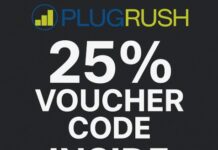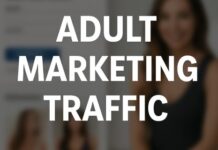Setting the Stage for Digital Advertising
The average American is exposed to thousands of advertisements every single day. This isn’t a barrier to entry, but an opportunity for anyone who can cut through the noise with a smart strategy. While the digital advertising world can seem overwhelmingly complex, successful campaigns are built on just a few core functions. You need a destination for your traffic, a way to find the right audience, a message that connects, and a method to measure what works.
Think of it like setting up a market stall. You need a physical spot (your landing page), a way to attract passersby (targeting), a compelling pitch (your ad creative), and a way to count your sales (tracking). This article provides a curated beginner marketing toolkit with seven essential, user-friendly tools. They are designed to cover these pillars, giving you the confidence to launch and manage your first campaign effectively.
Tool 1: Building Your Digital Storefront with a Website Builder
Every ad campaign needs a destination. This is your digital storefront, the place where a click turns into a customer. Without a clear and functional landing page, even the best ad is a dead end. For beginners, this doesn’t require hiring a developer or learning to code. Modern website builders have made creating a professional-looking page surprisingly simple.
Platforms like Wix offer intuitive drag-and-drop editors, allowing you to design a site visually. It’s like arranging furniture in a room until it feels right. If your goal is to sell products directly, a platform like Shopify might be a better fit, as it comes with built-in inventory management and payment processing. However, for lead generation or showcasing a service, a general website builder is perfect.
The most practical approach is to start with a free plan. You can build a fully functional page, test your offer, and see if your idea has traction. Once you gain momentum, you can upgrade to get a custom domain and remove platform branding. This small investment in credibility signals to visitors that you are a serious business, making them more likely to convert.
Tool 2: Uncovering Opportunities with Keyword Research Tools
Effective advertising starts with understanding the language of your audience. Keyword research is the process of discovering the exact words and phrases people type into search engines when they are looking for a solution. This insight is not just for search ads; it informs the copy for your banners, social media posts, and landing pages, ensuring your message resonates.
You can begin with a free tool like Ahrefs’ keyword generator. It’s an excellent starting point for brainstorming ideas and getting a general sense of search volume. As you grow, a comprehensive suite like SEMrush becomes invaluable. As noted in a Zapier article on the best digital marketing tools, these platforms offer deeper competitive insights, showing you what keywords your rivals are targeting. Using the right keywords leads to better targeting, higher ad relevance, and ultimately, lower costs. These are truly essential tools for advertisers.
Once you know what your audience is searching for, the next step is figuring out where to find them. Learning how to choose the right ad network is critical for putting those keyword insights into action.
| Feature | Free Tools (e.g., Ahrefs Keyword Generator) | Paid Suites (e.g., SEMrush) |
|---|---|---|
| Keyword Volume | Provides basic search volume ranges | Offers precise monthly search volume data |
| Keyword Difficulty | Not typically included | Provides a score to estimate ranking difficulty |
| Competitor Analysis | Limited or non-existent | Shows keywords competitors rank for and their ad copy |
| Content Ideas | Suggests related keyword phrases | Generates topic ideas and questions people ask |
Note: This table illustrates the typical trade-off. Free tools are excellent for initial brainstorming, while paid tools provide the competitive data needed for strategic optimization and scaling.
Tool 3: Creating Eye-Catching Ads with a Design Platform
In a crowded digital feed, your ad’s visual is the first thing people notice. A polished, professional-looking creative does more than just grab attention; it acts as a signal of trust. We’ve all scrolled past a blurry or poorly designed ad and instinctively felt the brand was less credible. You don’t need a graphic design degree to avoid that fate.
Canva is the ideal solution for beginners. Its strength lies in a massive library of templates that provide a professional starting point for your ad creatives. This template-driven approach simplifies the design process, allowing you to focus on your message. For a new advertiser, the practical benefits are immediate:
- Create multiple ad variations quickly to test different headlines and images.
- Resize a single design for various ad placements with just a few clicks.
- Maintain a consistent brand look across all your campaign materials.
The free version is incredibly robust and can be considered one of the most powerful free advertising tools available. It’s more than enough to get started. As your campaigns scale, you might consider the Pro version for features like Brand Kits and one-click background removal. Visuals can also adapt to different formats, and understanding options like what native ads are can open up new creative possibilities.
Tool 4: Managing Your Brand Voice with Social Media Schedulers
Many beginners think of social media only as a place to run ads. However, its real power lies in building the brand authority that makes those ads more effective. A consistent, organic presence builds trust and creates an audience that is more receptive to your paid messages. This is where social media management tools come in.
Platforms like Sprout Social or Loomly help you centralize your content planning and scheduling. By posting consistently, you grow an engaged following, which is a valuable asset in itself. But here’s the insight many new advertisers miss: these tools provide analytics on your organic content. As highlighted in a Sprout Social article about essential digital marketing tools, analyzing this data is key.
You can test different messages, creative angles, and calls to action with your existing audience to see what resonates. This allows you to gather real-world feedback before you commit a single dollar of your ad budget. It’s a low-risk way to refine your strategy and improve campaign performance from day one, turning your organic presence into a testing ground for your paid efforts.
Tool 5: Nurturing Leads with Email Marketing Platforms
An ad’s job is often to capture interest, not to close a sale on the spot. Once you have a potential customer’s email address, the real work of building a relationship begins. Email marketing is the tool that nurtures that initial interest over time, guiding a lead from curiosity to conversion.
Beginner-friendly platforms like Mailchimp and HubSpot offer generous free tiers, allowing you to build a sizable email list without any initial investment. The core concept to master here is simple automation. Imagine setting up a “welcome series,” an automated sequence of three or four emails sent to every new subscriber. The first email could deliver the promised resource, the second could share a customer success story, and the third could present a special offer.
This automated series works for you around the clock, building trust and providing value long after the initial ad click. It’s a crucial part of the advertising funnel, especially in verticals where decisions aren’t made instantly. For example, when you buy dating traffic, nurturing leads through email is essential for building the trust needed for a user to sign up. As your needs grow, you can look to more advanced tools like ActiveCampaign for complex segmentation.
Tool 6: Measuring Performance with Analytics Platforms
Without data, optimizing an ad campaign is just guesswork. Analytics platforms are the source of truth, telling you exactly what is working and what is not. Google Analytics is the free, industry-standard tool for understanding what happens after someone clicks your ad and lands on your website.
For a beginner, the sheer amount of data can feel intimidating. It’s best to focus on just a few key metrics to start:
- Traffic Source: This shows you which specific ads or campaigns are driving visitors to your site.
- Bounce Rate: This tells you if your landing page is relevant. A high bounce rate means people are leaving immediately, suggesting a mismatch between your ad and your page.
- Goal Completions: This tracks how many visitors complete a desired action, like filling out a form or making a purchase.
As you advance, you’ll encounter postback URLs, also known as server-to-server (S2S) tracking. Think of it as a direct and highly reliable communication line between the ad network and your site. This method ensures that conversions are tracked with maximum accuracy. Performance-focused ad campaign management tools and networks like ours rely on this to help advertisers optimize their spending effectively. You can learn more about the terminology on our support definitions page.
Tool 7: Enhancing Efficiency with AI-Powered Assistants
Not long ago, tasks like competitive analysis and copy variation testing required an entire marketing team. Today, AI-powered tools act as a force multiplier, giving individual advertisers powerful capabilities. These modern digital advertising tools for beginners can dramatically speed up your workflow and improve your results.
For example, content optimization tools like Surfer SEO can analyze the top-performing pages for your target keywords and provide data-driven suggestions for improving your ad copy and landing pages. Broader AI assistants can automate repetitive tasks like drafting dozens of ad variations, summarizing complex performance reports into bullet points, or even suggesting new targeting segments based on your data.
The most important thing for a beginner to remember is to view AI as an assistant, not a replacement for human strategy. Its real power is in handling the tedious, time-consuming work. This frees you up to focus on what truly matters: creative thinking, understanding your customer’s needs, and making strategic decisions based on the insights the AI provides.
Assembling Your Toolkit for Success
These seven categories of tools form a comprehensive starter pack covering the entire lifecycle of a digital ad campaign. From building your landing page to measuring the final conversion, you now have a roadmap for the essential software you need. The most important message is to start simple. Nearly every tool mentioned offers a free version that is more than capable of getting you started.
Mastering the fundamentals on these free platforms is far more valuable than owning expensive software you don’t know how to use. Remember, tools are only as good as the strategy behind them. True success comes from a deep understanding of your audience, a commitment to providing genuine value, and the discipline to optimize your campaigns based on performance data.
With this toolkit, you are well-equipped to launch your first campaign. You can take these insights and confidently buy traffic on a self-serve platform, beginning your journey in digital advertising.







